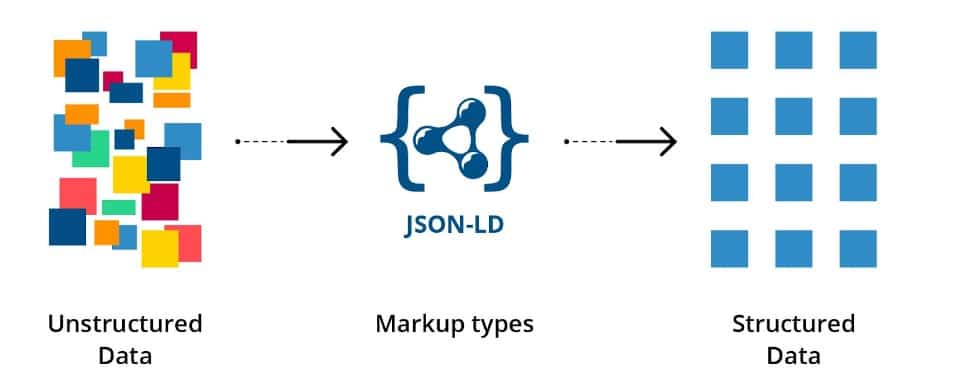The landscape of search engine optimization is on the cusp of a transformative journey that promises to reshape the way digital content is discovered and consumed. As we venture into the future, the dynamics of SEO are set to evolve, driven by technological advancements, changing user behaviors, and search engine algorithms that are becoming increasingly sophisticated.
In the coming years, several noteworthy trends are poised to shape the future of SEO. Voice search is gaining prominence, with virtual assistants becoming integral to users’ daily lives. This shift necessitates a focus on conversational keywords and more natural language in content creation. Additionally, the significance of structured data and schema markup is on the rise. These technologies enable search engines to understand content contextually, leading to enhanced visibility and improved search rankings.
User experience will continue to be a driving force, with Core Web Vitals gaining prominence as a ranking factor. Websites that offer seamless and engaging experiences, especially on mobile devices, will likely see favorable outcomes in search results. Furthermore, the growing influence of artificial intelligence is reshaping how search engines understand user intent, requiring a deeper understanding of user needs to tailor content effectively.
As the digital landscape becomes increasingly visual, video optimization and visual search are emerging as crucial areas of focus. Adapting to these trends by optimizing video content and harnessing AI-driven visual search tools will be pivotal in maintaining a competitive edge.

Here are some of the trends to look forward to for the blooming future of SEO:
User Intent-Centric Optimization
User Intent-Centric Optimization for SEO is a strategic approach to search engine optimization that emphasizes aligning website content with the specific intents of users during their online searches. This method recognizes that search engine algorithms have evolved to understand user intent beyond just keywords. By tailoring content to fulfill user intent, websites can enhance their search visibility and user engagement.

This optimization technique involves thorough keyword research to identify different facets of user intent, such as informational, navigational, transactional, and commercial queries. Once these intents are understood, content can be developed to address each intent effectively. This not only improves the chances of ranking higher in search results but also ensures that users find relevant and valuable information upon clicking through.
To implement user intent-centric optimization, it’s crucial to create high-quality, comprehensive, and contextually relevant content that caters to various user intents. Additionally, optimizing on-page elements, improving website structure, and enhancing user experience all play essential roles. By focusing on user intent, websites can not only improve their SEO performance but also build lasting connections with their audience by delivering precisely what users are looking for.
If you want to enhance your website’s user intent optimization further, consider hiring a Vue.js developer to implement advanced frontend features and functionalities that can better align with user intent and improve the overall user experience on your website.
BERT and Natural Language Processing
BERT (Bidirectional Encoder Representations from Transformers) has revolutionized Natural Language Processing (NLP) and has significant implications for SEO. BERT is a deep learning model that enables search engines to better understand the context and nuances of user queries, leading to more accurate and relevant search results.
For SEO, BERT’s impact lies in its ability to comprehend the natural language intricacies of search queries. This means that optimizing content solely around keywords might be insufficient. Instead, content creators need to focus on providing comprehensive and contextually rich information that addresses the diverse ways people phrase their queries.
As search engines leverage BERT to interpret user intent, SEO strategies must prioritize creating content that aligns with a broader range of user intentions. This involves understanding the different variations and intents behind keywords and crafting content that caters to them.
Moreover, BERT also highlights the significance of conversational and long-tail keywords. As search becomes more conversational due to voice search and natural language queries, SEO efforts should involve incorporating these conversational phrases in content.
In summary, BERT’s integration into search algorithms necessitates a shift towards user-centric, informative, and contextually relevant content. By embracing BERT and NLP techniques, SEO practitioners can enhance the chances of their content reaching the right audience and addressing their queries effectively.
User Generated Content for SEO
User generated content means any content created by users, rather than professionals or organizations. And using it in SEO strategy can be a powerful way to enhance your SEO efforts, driving organic traffic and improving your website’s overall performance in search engine results.
- Local SEO: User-generated reviews and content with location-based information can boost your local SEO efforts, helping your business or website appear in local search results, which is crucial for brick-and-mortar businesses.
- Content generation cost: UGC can be a cost-effective way to generate content as it relies on contributions from your user community, saving you time and resources compared to creating all content in-house.
- Frequent updates: As users continually contribute content, your website stays updated with fresh information, signaling to search engines that your site is active and relevant, which can positively impact your SEO rankings.
Voice Search Optimization
Voice search optimization for SEO is a strategy aimed at enhancing a website’s visibility and relevance in voice-based search queries. As voice assistants like Siri, Google Assistant, and Amazon Alexa gain popularity, optimizing for voice search is becoming crucial.
Voice search queries are often longer and more conversational than text-based queries. To optimize for voice search, businesses need to focus on long-tail keywords and natural language patterns that people use when speaking. Content should be crafted in a way that answers specific questions concisely and clearly.
Featured snippets play a significant role in voice search results. Structured data markup should be employed to help search engines understand and present content as featured snippets.
Mobile-friendliness and fast loading times are paramount for voice search optimization. Many voice searches are performed on mobile devices, and slow-loading websites can lead to poor user experiences.
Local SEO is also vital for voice search, as many queries are location-specific (“near me” searches). Ensuring consistent business information across online directories and focusing on local content can boost visibility in voice search results.
Incorporating FAQ pages and optimizing for “who,” “what,” “where,” “when,” “why,” and “how” questions can increase the chances of being chosen as a voice search result.
In summary, voice search optimization requires a user-centric approach that caters to longer, conversational queries, prioritizes mobile experience, and targets local intent. By aligning SEO strategies with the nuances of voice search, businesses can position themselves effectively in this evolving landscape.
Video SEO
Video SEO refers to the strategies and techniques used to optimize video content for search engines, aiming to improve its visibility and ranking in search results. With the increasing popularity of video as a content format, video SEO has become essential for businesses to reach a wider audience.
Keyword research is a fundamental step in video SEO. Identifying relevant and high-traffic keywords allows creators to tailor video titles, descriptions, and tags to align with user search intent.
Compelling video thumbnails and titles is crucial for attracting clicks and views. Thumbnails should be visually appealing and give viewers a preview of what the video offers.
Creating high-quality, engaging, and relevant video content is paramount. The video should provide valuable information or entertainment that fulfills user expectations.
Video transcripts and closed captions enhance accessibility and SEO. Search engines can crawl and index the text, improving the video’s search visibility.
Video hosting platforms like YouTube offer various features for optimization, including video descriptions, tags, and categories. Utilizing these features effectively can improve the video’s discoverability.
Promotion and backlinking play a role in video SEO. Sharing videos on social media, embedding them on websites, and building backlinks can enhance their authority and visibility.
Monitoring video performance through analytics helps refine video SEO strategies over time. Engagement metrics, watch time, and user feedback provide insights into what’s working and what needs improvement.
In summary, video SEO involves meticulous keyword targeting, engaging content creation, optimization on hosting platforms, accessibility features, and strategic promotion. By implementing these practices, businesses can maximize the impact of their video content on search engine results and reach a broader audience.
Augmented Reality and Visual Search
Augmented Reality (AR) and visual search are emerging technologies that are reshaping the landscape of SEO by introducing new ways for users to interact with content and search for information.
AR allows users to overlay digital elements in the real world through devices like smartphones or AR glasses. Optimizing for AR involves creating AR-friendly content that enhances user experiences. This can include creating AR product demos, virtual showrooms, or interactive guides. AR-optimized content can attract more engagement and longer on-page time, positively impacting SEO rankings.
Visual search enables users to search using images rather than text. By optimizing images with descriptive alt text, structured data, and relevant metadata, businesses can ensure their images are correctly indexed and appear in visual search results. This can drive organic traffic and potentially lead to higher engagement.
Both AR and visual search are closely tied to mobile devices, so ensuring mobile-friendliness and fast loading times remain crucial for SEO success. Additionally, optimizing for local intent is valuable, as AR and visual search can enhance local shopping experiences.
As these technologies gain prominence, integrating them into the SEO strategy can provide a competitive advantage. By embracing AR and visual search, businesses can offer unique and immersive experiences, increasing user engagement and visibility in evolving search landscapes.
Structured Data and Schema Markup
Structured data and schema markup are advanced SEO techniques that involve adding extra information to a web page’s HTML code, making it easier for search engines to understand and display content accurately in search results.

Schema markup uses a standardized vocabulary to label different elements on a webpage, such as products, aggregated reviews, recipes, events, and more. By implementing schema markup, websites can provide search engines with additional context about their content, which can lead to rich snippets, enhanced search listings, and other visually appealing features in search results.
Structured data helps search engines interpret content more accurately. For example, it can specify the relationship between different pieces of information, like the ingredients in a recipe or the cast of a movie. This results in better presentation of search results and potentially higher click-through rates.
Schema markup is particularly important for voice search and other emerging search technologies that rely on structured data to provide concise and accurate answers to user queries.
Effective use of structured data requires a clear understanding of the schema vocabulary and proper implementation on the website. While it might not have a direct impact on traditional ranking factors, structured data indirectly contributes to better user experience and increased visibility in search results, potentially driving more organic traffic.
In summary, structured data and schema markup are essential tools for modern SEO strategies. They enable websites to provide more context to search engines, leading to improved search result presentation and increased user engagement.
Long-form and Comprehensive Content
Creating long-form and comprehensive content is a strategic approach in SEO that involves producing in-depth articles, guides, or resources that thoroughly cover a topic. This approach recognizes that search engines often prioritize content that provides value and answers user queries comprehensively.
Long-form content typically exceeds 1,000 words and can extend to several thousand words. By delving deeply into a subject, it demonstrates expertise, authority, and relevance, which are crucial for SEO.
Comprehensive content tends to attract more backlinks and social shares, both of which are essential for improving domain authority and search rankings. Users are more likely to share and reference content that provides in-depth insights and solutions.
Search engines often reward longer content with higher rankings, as it’s more likely to answer a broader range of user questions and satisfy different search intents.
However, long-form content must maintain high quality, readability, and engagement. It should be well-structured with subheadings, images, and other multimedia elements to break up the text and make it more accessible. AI tools can play a crucial role in automating the optimization of long-form content for search engines and improving its overall performance, but it’s important to complement their capabilities with human expertise and oversight for the best results.
Long-form keywords and comprehensive content also allow for naturally incorporating a variety of relevant keywords and phrases, contributing to a wider reach in search results.
In summary, long-form and comprehensive content plays a vital role in modern SEO strategies. It showcases expertise, attracts links and shares, addresses user intent comprehensively, and enhances search visibility through well-optimized and valuable content.
International and Multilingual SEO
International and multilingual SEO involves optimizing websites to target audiences in different countries and languages. It’s a strategic approach that acknowledges the global nature of the internet and the diverse linguistic preferences of users.
To implement international SEO, businesses should use ahrefs tags to indicate the language and geographic targeting of each version of their content. This ensures that search engines display the appropriate version of a webpage to users based on their location and language.
Multilingual SEO involves creating content in multiple languages to cater to a broader audience. This requires accurate translation and localization to ensure the content resonates culturally and linguistically with the target audience.
Keyword research is critical in international and multilingual SEO. Different regions might use varying search terms, so adapting keywords is essential for relevance.
Optimizing for local search engines and directories in each target country is also important. Different search engines dominate in different regions, and optimizing for these platforms increases visibility.
It’s essential to provide a seamless user experience by optimizing for local technical aspects such as load times, server locations, and mobile compatibility.
By implementing effective international and multilingual SEO strategies, businesses can expand their reach and tap into new markets while providing a tailored experience for diverse users around the world.
Zero-Click Searches
Zero-click searches refer to search engine results pages (SERPs) where users obtain the information they need without clicking on any search result. This occurs when search engines provide direct answers to queries in the form of featured snippets, knowledge panels, and other rich results.
For SEO, zero-click searches represent both challenges and opportunities. While they can potentially reduce organic click-through rates, they also offer a chance to increase brand visibility and establish authority.
To adapt to zero-click searches, content creators should focus on targeting featured snippets. Crafting concise, informative answers to common user questions can increase the chances of being featured. Structured data markup, like schema.org, helps search engines understand content better and enhances the possibility of appearing in rich results.
Optimizing for voice search is crucial, as voice assistants often rely on zero-click results to provide quick answers.
Local businesses can benefit from zero-click searches by ensuring accurate business information in online directories, which helps populate knowledge panels.
Long-tail keywords and semantic search optimization play a role. Understanding user intent behind search queries helps create content that addresses those intents directly.
In conclusion, zero-click searches are changing the SEO landscape. To succeed, businesses need to focus on featured snippets, structured data, voice search, and providing concise, valuable information that aligns with user intent.
User Signals from Chrome
User signals from Chrome are a set of metrics that Google may use to assess user engagement and satisfaction with a website. These signals are derived from users’ interactions with the Chrome browser, including click-through rates, dwell time, bounce rates, and other engagement metrics.
Google collects user signals to better understand how users perceive and interact with search results and websites. These signals provide insights into the relevance and quality of search results, allowing Google to refine its algorithms and provide more valuable results.
For SEO, user signals from Chrome underscore the importance of delivering high-quality, relevant content that meets user expectations. Websites that engage users effectively are more likely to receive positive user signals, which can potentially lead to higher search rankings.
Creating user-focused, valuable content and optimizing user experience can improve user signals. High click-through rates, longer dwell times, and lower bounce rates signal to Google that users find the content useful and engaging.
Mobile-friendliness and fast loading times are also crucial, as they contribute to positive user experiences and signal high-quality websites.
While Google has not explicitly stated that Chrome user signals are direct ranking factors, they undoubtedly reflect user behavior and preferences. Therefore, aligning SEO strategies with user intent and engagement can indirectly influence rankings through positive user signals.
Conclusion
In the dynamic landscape of SEO, the future promises a multitude of intriguing predictions and trends that are poised to reshape the way businesses approach online visibility and user engagement. As search engines continue to evolve, voice search optimization is set to gain further prominence, requiring content that caters to conversational and long-tail queries. The integration of AI and machine learning will refine search algorithms, emphasizing user intent and personalized experiences.
Furthermore, mobile-friendliness and page speed will remain critical, as the majority of searches are conducted on mobile devices. Visual and video content will continue to flourish, necessitating optimized strategies for image and video SEO. As AI-generated content becomes more sophisticated, maintaining human authenticity and value in content creation will be paramount.
Emerging technologies like augmented reality (AR) and visual search are poised to transform search experiences, creating opportunities for innovative SEO approaches. Privacy concerns will drive the need for secure and compliant websites, impacting rankings.
In conclusion, the future of SEO is marked by a synergy between user-centricity, technical expertise, and adaptability to emerging technologies. By embracing these predictions and trends, businesses can navigate the evolving SEO landscape and position themselves for success in an increasingly competitive digital realm.








